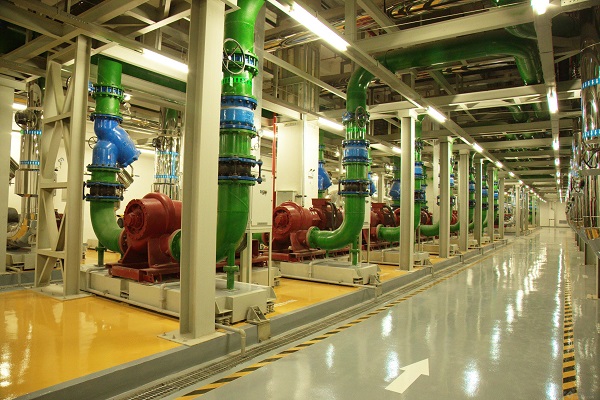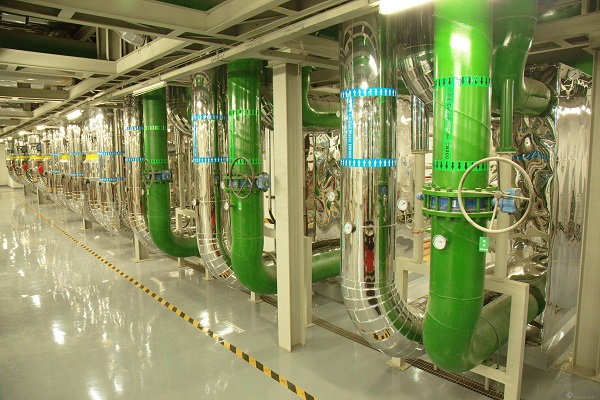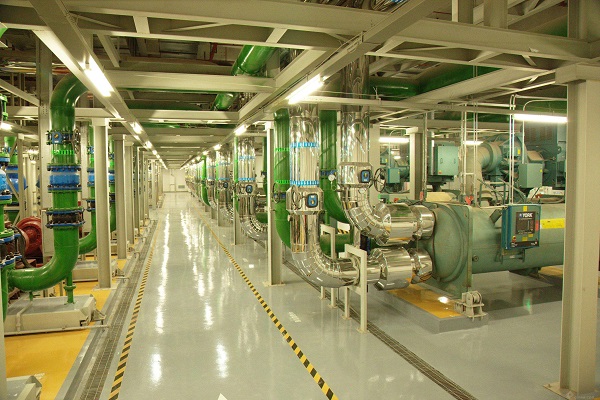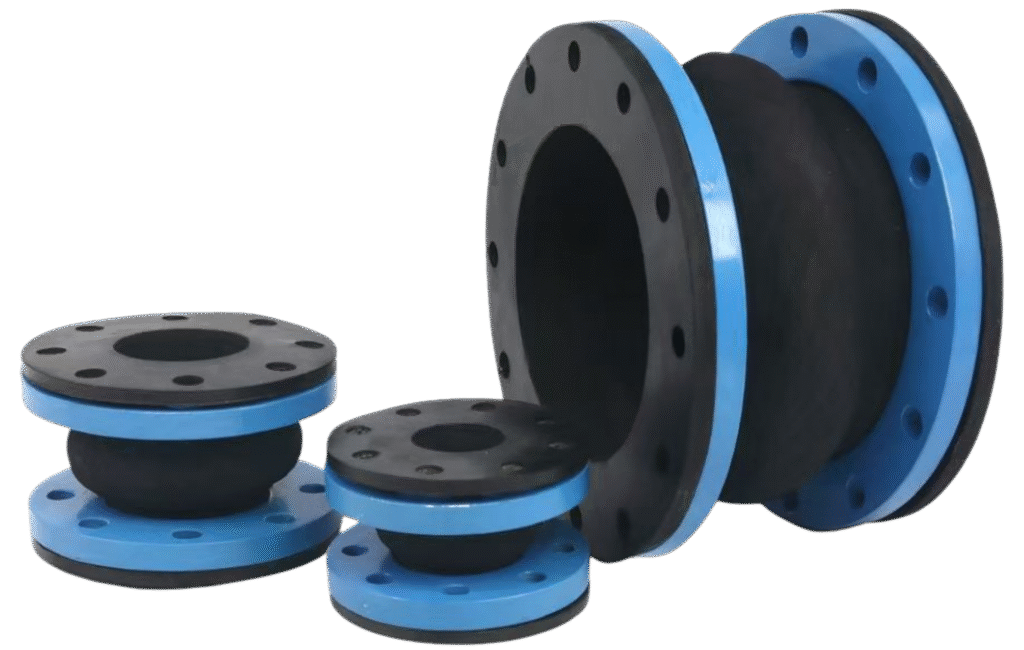Hilton Hotel’s Purchase of Rubber Expansion Joints for Chilled Thermal Storage Central HVAC Plant in 2015
In 2015, Hilton Hotel procured high-quality rubber expansion joints for its chilled thermal storage central HVAC plant to address challenges caused by thermal expansion and vibration in large equipment piping. Through precise product selection and professional installation, the HVAC system achieved stable operation, significantly reducing noise and maintenance costs, thereby creating a more comfortable and quiet environment for the hotel.
Expansion joints play a crucial role in modern HVAC systems. They effectively relieve stress caused by thermal expansion and contraction in pipes, while absorbing vibrations and noise generated during equipment operation. This greatly extends the service life of piping and equipment and enhances overall system stability. Whether for chilled water pipes or duct systems, choosing premium rubber expansion joints with appropriate materials and design directly impacts system performance and maintenance expenses. Proper installation and maintenance not only prevent pipe damage but also improve equipment noise isolation, delivering a quieter and more comfortable indoor environment.



Trusted by Global Hospitality Leaders — Hilton Hotel HVAC Case Insight
HVAC systems in luxury hotels like Hilton demand long-lasting, vibration-absorbing solutions.
Songjiangflex rubber expansion joints are trusted by HVAC contractors for high-end hospitality projects due to their superior elasticity, noise isolation, and resistance to pressure and temperature changes.
Whether in the chiller rooms or central piping systems of Hilton hotels, our products help ensure silent operation, energy efficiency, and structural safety — all essential to guest comfort and operational reliability.
Why Are Expansion Joints Important in HVAC Systems?
Expansion joints are essential cushioning components in HVAC piping systems. They absorb thermal expansion and contraction caused by temperature variations, preventing pipe rupture or disconnection due to excessive stress. Moreover, they serve as vibration isolators, minimizing the transmission of vibrations from operating equipment and protecting pipes and connected components. Proper use of expansion joints extends the lifespan of piping and equipment, reduces maintenance frequency, shortens downtime, and improves the safety and cost-effectiveness of system operation.
How Do High-Quality Expansion Joints Protect Equipment and Improve Sound Insulation?
Premium rubber expansion joints not only accommodate pipe expansion and contraction due to temperature changes but also absorb vibrations generated during equipment operation, reducing the transmission of mechanical noise. Their elastic structure and sealing design protect pipeline connections from excessive stress, helping to prevent leaks and fatigue fractures. Additionally, the inherent damping properties of rubber significantly reduce noise from HVAC equipment, enhancing building comfort and overall environmental quality.
What Are the Differences Between Common Types of Expansion Joints in HVAC Systems?
Different types of expansion joints are commonly used in HVAC systems, each with unique characteristics. Choosing the right type is crucial for ensuring system stability and extending equipment lifespan. Below are the main types of expansion joints and their differences:
Rubber Expansion Joints:
Highly flexible with excellent corrosion resistance, rubber expansion joints are economical and easy to install. Molded single-sphere rubber joints can effectively absorb multidirectional displacement, vibration, noise, and impact, making them widely used for vibration and noise reduction in piping systems.
PTFE Expansion Joints:
Made from inert PTFE material, these joints are ideal for environments that demand high chemical resistance and temperature tolerance. They can withstand extreme temperatures from -200°C to +260°C, and their low permeability helps prevent media leakage. They are especially suited for high-temperature, highly corrosive piping systems.
Duct Expansion Joints:
Specifically designed for duct systems, these joints isolate vibration and noise while compensating for thermal expansion, contraction, and system displacement in industrial environments. They help maintain the stable operation of ductwork systems.
Metal Braided Hose Connectors:
Primarily used to control vibration, reduce noise, and relieve stress in piping while accommodating slight misalignments. Typically made from stainless steel or copper, these connectors are highly resistant to high temperature and pressure, making them ideal for connecting to heavy-duty equipment such as pumps and compressors.
Wall Penetration Sealing Systems:
These systems provide robust sealing for pipes passing through walls, floors, or tanks. They prevent the spread of air, water, or fire, ensuring the safety and sealing integrity of HVAC systems and buildings.
How to Properly Arrange Expansion Joints in HVAC Systems?
Proper arrangement of expansion joints in HVAC systems is key to ensuring long-term stable operation and reducing maintenance. Firstly, expansion joints must work together with appropriate anchoring devices, guiding devices, and support systems to avoid excessive stretching or compression caused by pipe displacement or self-weight. Anchoring points are typically set at straight pipe sections and pipe bends, with expansion joints installed as close to these anchors as possible to control forces generated by thermal expansion and contraction.
When selecting expansion joints, three main factors should be carefully considered:
Pipe Anchoring System:
High-quality anchoring devices must be used to withstand the thrust generated by expansion joints and forces from pipe movement. Anchors should be installed on the thermal expansion sections upstream and downstream of the expansion joint, coordinated with control rods or limit bolts to ensure the joint operates within its allowable movement range, preventing overextension or compression.
Pressure and Temperature Parameters:
Confirm the actual working pressure and temperature the expansion joint needs to withstand. It is recommended to select expansion joints rated for at least four times the system’s working pressure to cope with water hammer and instantaneous impact pressure, ensuring system safety and stability.
Vibration Suppression Requirements:
Pumps and mechanical equipment in HVAC systems generate vibrations, which not only reduce system efficiency but can also cause noise problems. It is recommended to use expansion joints made of neoprene or EPDM rubber for their excellent elasticity and vibration dampening properties. Additionally, options with C/S steel flanges or NPT threaded ends combined with 321 stainless steel hoses or 304 braided hoses can further enhance durability and vibration isolation performance.
What Are the Differences Between High- and Low-Quality Rubber Expansion Joints?
High-quality rubber expansion joints are made from specialized rubber materials such as NBR (Nitrile Butadiene Rubber), CR (Chloroprene Rubber), or FKM (Fluoroelastomer), which offer excellent resistance to heat, corrosion, and aging. These joints are produced through strict molding processes to ensure sealing and elasticity. In contrast, inferior products often use recycled rubber or low-grade formulations that harden and crack easily, resulting in a short service life. High-quality joints excel in pressure resistance, temperature tolerance, and chemical resistance, effectively withstanding vibrations and thermal expansion in HVAC systems. Poor-quality products fail to meet these demanding conditions, often resulting in leakage, rupture, or system failure.
Can Poor-Quality Rubber Expansion Joints Explode in Large HVAC Equipment?
Poor-quality rubber expansion joints pose serious safety risks in HVAC systems. Due to insufficient material strength and low resistance to temperature and pressure, these joints may fail to withstand internal pipe pressure or temperature fluctuations. This can lead to swelling, deformation, or even rupture. In extreme cases, uncontrolled pressure or stress concentration may cause an explosion, endangering both equipment and personnel. In large-scale central air conditioning or cooling systems, choosing expansion joints that comply with national standards and offer reliable quality is critical to preventing explosions and pipeline leaks.


